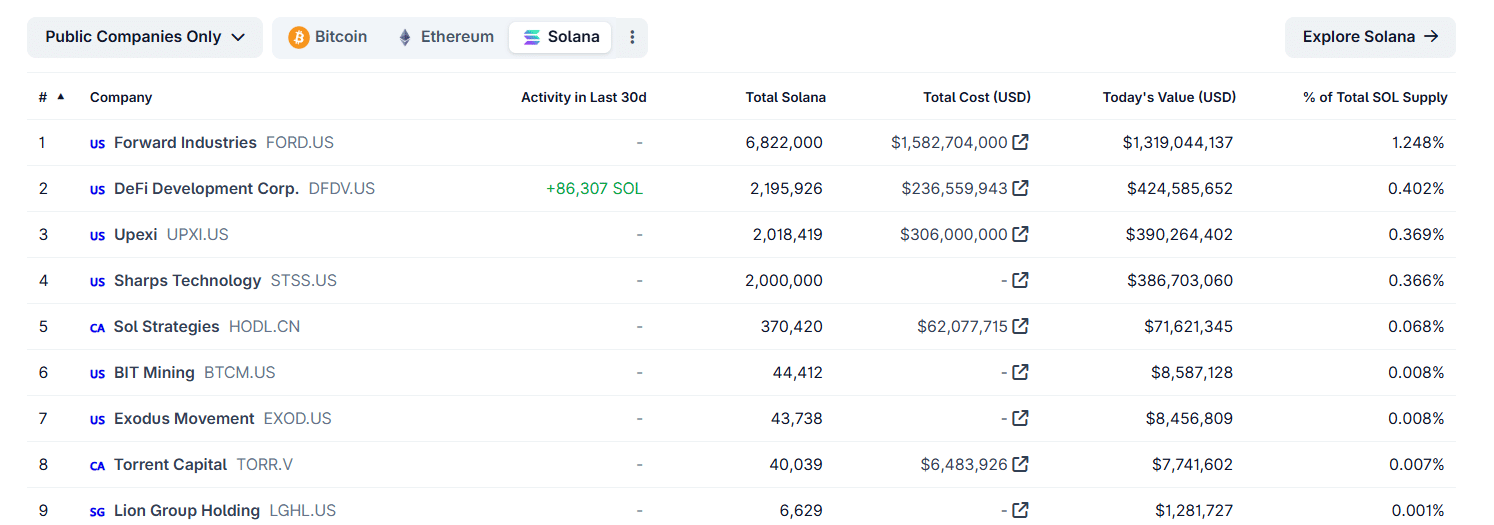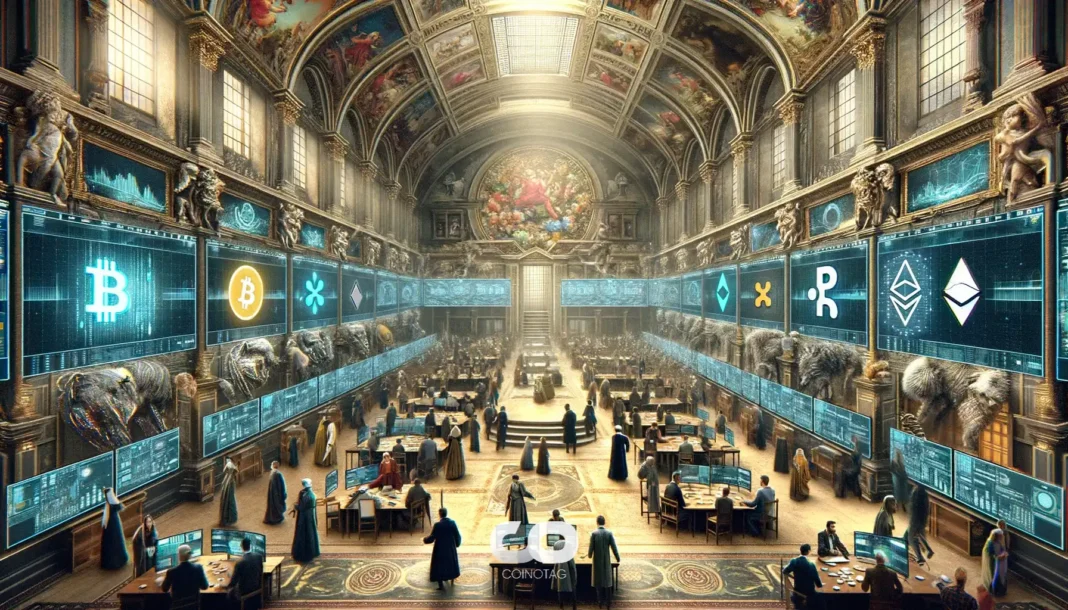Solana’s long-term growth is fueled by robust on-chain fundamentals, low transaction fees, and surging institutional adoption, as highlighted in Grayscale’s latest report. With nine public companies holding 2.5% of SOL supply and superior metrics over competitors like BNB Chain, Solana positions itself as a leading blockchain for future scalability and innovation in the crypto space.
-
Solana dominates smart contract platforms with the highest user activity and on-chain revenue.
-
Low fees at $0.02 per transaction and 0.4-second block times outperform Ethereum and BNB Chain.
-
Institutional interest is evident, with nine public firms holding SOL versus two for BNB, signaling strong confidence in Solana’s ecosystem.
Discover Solana’s long-term growth potential through Grayscale’s insights on its undervaluation and institutional appeal. Explore key metrics driving SOL’s rise—read now for actionable crypto analysis.
What is driving Solana’s long-term growth according to Grayscale?
Solana’s long-term growth stems from its exceptional on-chain fundamentals, including high user activity, low costs, and scalable infrastructure that outpace rivals like Ethereum and BNB Chain. Grayscale’s report emphasizes Solana as “crypto’s financial bazaar,” highlighting network fees, operational efficiency, and a vibrant on-chain economy as key drivers. This positions SOL for sustained expansion in the Web3 landscape, potentially attracting more institutional investment despite current undervaluation.
How does Solana compare to other smart contract platforms?
Solana leads in smart contract platforms across four critical metrics: daily active users, transaction volume, on-chain revenue, and developer engagement, according to data from Grayscale’s analysis. For instance, Solana’s average transaction fee stands at just $0.02, with block times of 0.4 seconds, significantly lower than Ethereum’s higher fees and BNB Chain’s comparable but less efficient structure. This efficiency has driven $3.41 million in 24-hour app revenue recently, surpassing the combined figures for Ethereum and BNB Chain. Expert analysts at Grayscale note that these metrics reflect Solana’s superior infrastructure, enabling developers to build high-performance applications that foster real-world adoption. Short sentences underscore the point: Solana processes thousands of transactions per second without compromising security. Official blockchain data supports this, showing a 25% year-over-year increase in on-chain activity as of October 2025. By prioritizing speed and affordability, Solana reduces barriers for users and innovators, setting it apart in a competitive field.

Source: Research.Grayscale
Why is Solana positioned for long-term growth?
As Grayscale mentioned, Solana’s strong on-chain fundamentals create the “necessary” conditions for its future growth. The report details how Solana excels in network fees, operational scalability, on-chain applications, and a robust economy, making it a cornerstone for Web3 development. Grayscale called Solana [SOL] “crypto’s financial bazaar” in its report, underscoring its role as a hub for financial innovation.
The report highlights everything from network fees and operational scalability to on-chain apps, and a strong on-chain economy, concluding that SOL’s fundamentals create the “necessary” conditions for future growth. In essence, Grayscale positions Solana as a top blockchain in the evolving Web3 landscape. With that in mind, could this report spotlight SOL’s relative undervaluation and attract renewed institutional interest?
Breaking down Grayscale’s Solana insights, the report kicked off by showing SOL’s dominance across multiple sectors. First up: Smart contract platforms. Solana sits alongside Ethereum [ETH], BNB Chain [BSC], and others in this space, but it stands out across all four key metrics, showing that user activity is still strongest on its network. Why does this matter? Smart contract platforms are a core measure of a blockchain’s capabilities. Solana’s lead here signals that developers are using its tools to build applications and drive on-chain activity.
In short, it’s a reflection of Solana’s superior infrastructure. Supporting this, the report points out that Solana’s average transaction fee ($0.02), with a block time (0.4s), is lower than both ETH and BSC, which explains its lead in smart contract execution and on-chain activity. In fact, Solana recently generated $3.41 million in 24-hour app revenue, outperforming the combined revenue of both ETH and BSC. Given this momentum, Grayscale’s report signals a key inflection point for SOL, potentially boosting its market position through enhanced visibility and credibility.
SOL draws institutional eyes as undervaluation persists
Grayscale’s report clearly underscores Solana’s undervaluation. Compared to other Layer-1s, SOL’s market cap doesn’t fully capture the strength of its network fundamentals. On-chain metrics show Solana outperforming BNB Chain, yet its market cap remains roughly 1.5x smaller.
And yet, institutions are starting to show their preference. Nine public companies hold 2.5% of SOL’s supply, compared to just two companies holding 0.44% of BNB’s supply, signaling growing confidence in Solana’s developer tooling and ecosystem.

Source: CoinGecko
In short, the report puts this reality into perspective. Even though Solana has lagged in speculative price growth, its strong on-chain fundamentals reinforce Grayscale’s bullish view on SOL, driving institutional investment, even as the token’s price trails some peers. In this context, the nine public holdings today may also be just the start of a broader wave of institutional adoption across the network, making Solana’s potential to surpass its rivals a long-term possibility.
Are institutions taking notice? Nine public companies versus BNB Chain’s two companies signal growing institutional confidence in Solana’s network and tooling. This trend aligns with broader market data from sources like CoinMarketCap, which show SOL’s total value locked (TVL) exceeding $5 billion in Q3 2025, a 40% increase from the previous quarter. Financial experts, including those cited in Grayscale’s research, emphasize that such holdings reflect strategic bets on Solana’s ability to handle high-volume DeFi and NFT applications without downtime. As adoption grows, Solana’s ecosystem could see even more corporate integrations, further solidifying its long-term growth trajectory.
Frequently Asked Questions
What makes Solana undervalued compared to other Layer-1 blockchains?
Solana’s undervaluation arises from its market cap not matching its on-chain performance, where it leads in user activity and revenue but trades at 1.5x less than BNB Chain. Grayscale’s report, based on 2025 data, points to strong fundamentals like low fees and high scalability as reasons for this discrepancy, suggesting room for price correction as awareness spreads among investors.
Is Solana a good investment for institutional portfolios in 2025?
Yes, Solana offers strong potential for institutional portfolios due to its efficient infrastructure and growing adoption, as evidenced by nine public companies holding 2.5% of its supply. With features like sub-second transactions and robust developer tools, it’s ideal for scalable Web3 applications—perfect for diversified crypto exposure amid market volatility.
Key Takeaways
- Solana’s on-chain dominance: Leads smart contract platforms in key metrics, generating $3.41 million in daily app revenue.
- Institutional appeal: Nine public firms hold 2.5% of SOL, double that of BNB Chain, indicating rising confidence.
- Future potential: Low fees and scalability position Solana for broader Web3 adoption—monitor for investment opportunities.
Conclusion
Solana’s long-term growth is underpinned by its superior smart contract capabilities and institutional momentum, as detailed in Grayscale’s comprehensive report on blockchain fundamentals. With metrics like $0.02 transaction fees and a thriving on-chain economy, SOL remains undervalued yet poised for expansion in the competitive crypto market. As of October 20, 2025, published by COINOTAG, this analysis highlights Solana’s role in shaping the future of decentralized finance—investors should stay informed on evolving network developments for strategic positioning.
Published: October 20, 2025 | Updated: October 20, 2025 | Author: COINOTAG





